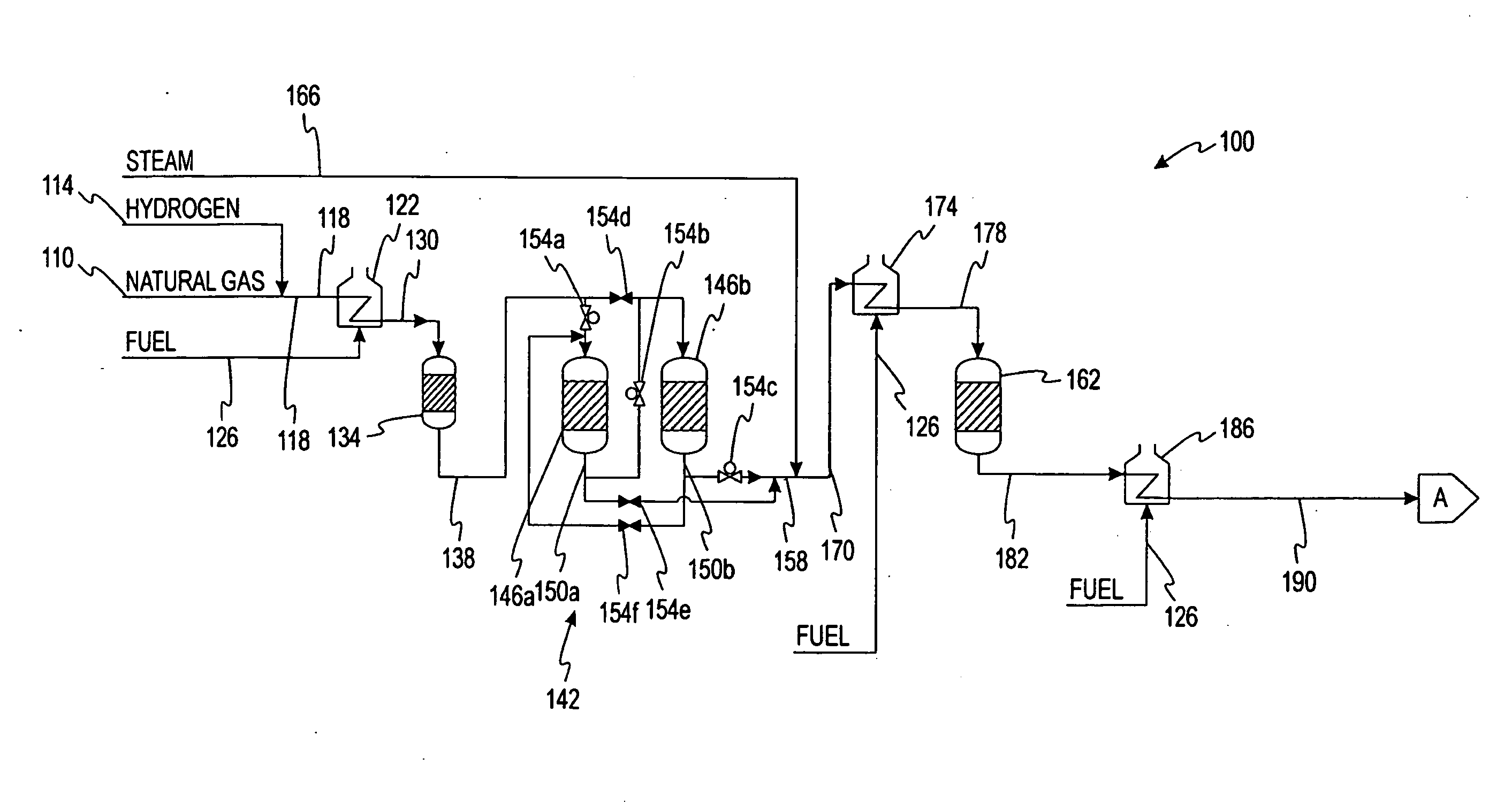Process for producing synthetic petroleum jelly
a petroleum jelly and synthetic technology, applied in the field of petroleum jelly system and process, can solve the problems of limited cosmetic use of petroleum jelly
- Summary
- Abstract
- Description
- Claims
- Application Information
AI Technical Summary
Benefits of technology
Problems solved by technology
Method used
Image
Examples
example 1
[0109]A syncrude consisting of 148.1 g of Fischer-Tropsch heavy-hydrocarbons in wax form and 84.9 g of Fischer-Tropsch light-hydrocarbons in oil form was added to a 500 mL 3-necked round bottom flask and melted. (Table I is a typical Fischer-Tropsch light-hydrocarbon composition.)
TABLE ITypical Composition of Fischer-Tropsch Light-Hydrocarbon Stream(Normalized Weight Percent)Carbon No.paraffinsolefinsC40.17%0.27%C50.72%0.64%C62.34%1.51%C75.31%2.81%C87.82%3.17%C99.01%2.86%C109.46%2.13%C119.07%1.69%C128.32%1.31%C137.36%0.95%C145.98%0.65%C154.60%0.44%C163.48%0.28%C172.74%0.11%C181.89%0.14%C191.03%0.11%C200.83%0.04%C210.47%0.01%C220.26%0.01%
A sample of this syncrude was taken at 74° C. (165° F.). When the temperature reached 145° C. (293° F.), 15 mL LUPEROX-101 dialkyl peroxide (purchased from Aldrich catalogue) was added to the syncrude mixture. The mixture was allowed to reflux at this temperature for 3 hours. Samples were taken after each hour for analysis.
[0110]The untreated syncrud...
example 2
[0111]148.4 g of Fischer-Tropsch (FT) heavy-hydrocarbon wax was added to a 500 mL 3-necked round bottom flask and melted. A sample of this wax was taken. When the temperature reached 145° C. (293° F.), 5 mL LUPEROX-101 was added to the flask. The liquid was maintained at this temperature and allowed to reflux. After five minutes, 10 mL of 98% 1-octene was added. Another 10 mL of 98% 1-octene was added every 10 minutes, for a total of 50 mL added. When all of the 1-octene had been added, 5 mL of LUPEROX-101 was the added. After another hour of reflux at 145° C. (293° F.), the final 5 mL of LUPEROX-101 was added. The mixture was then allowed to reflux for one more hour.
[0112]The untreated wax had a congealing temperature of 64° C. (147° F.). The treated sample had a congealing point of 58.5° C. (137° F.). The final product was a semi-solid with the texture and properties of petroleum jelly. The product did not melt on skin contact.
example 3
[0113]99.4 g of heavy Fischer-Tropsch heavy-hydrocarbons in wax form was added to a 250 mL round bottom flask. The sample was distilled using a Vigreux distillation column under 23 inches of mercury vacuum. Light hydrocarbons were evaporated, condensed, and then collected in a second flask. 90.9 g of distilled Fischer-Tropsch wax was recovered.
PUM
| Property | Measurement | Unit |
|---|---|---|
| Time | aaaaa | aaaaa |
| Time | aaaaa | aaaaa |
| Temperature | aaaaa | aaaaa |
Abstract
Description
Claims
Application Information
 Login to View More
Login to View More - R&D
- Intellectual Property
- Life Sciences
- Materials
- Tech Scout
- Unparalleled Data Quality
- Higher Quality Content
- 60% Fewer Hallucinations
Browse by: Latest US Patents, China's latest patents, Technical Efficacy Thesaurus, Application Domain, Technology Topic, Popular Technical Reports.
© 2025 PatSnap. All rights reserved.Legal|Privacy policy|Modern Slavery Act Transparency Statement|Sitemap|About US| Contact US: help@patsnap.com



